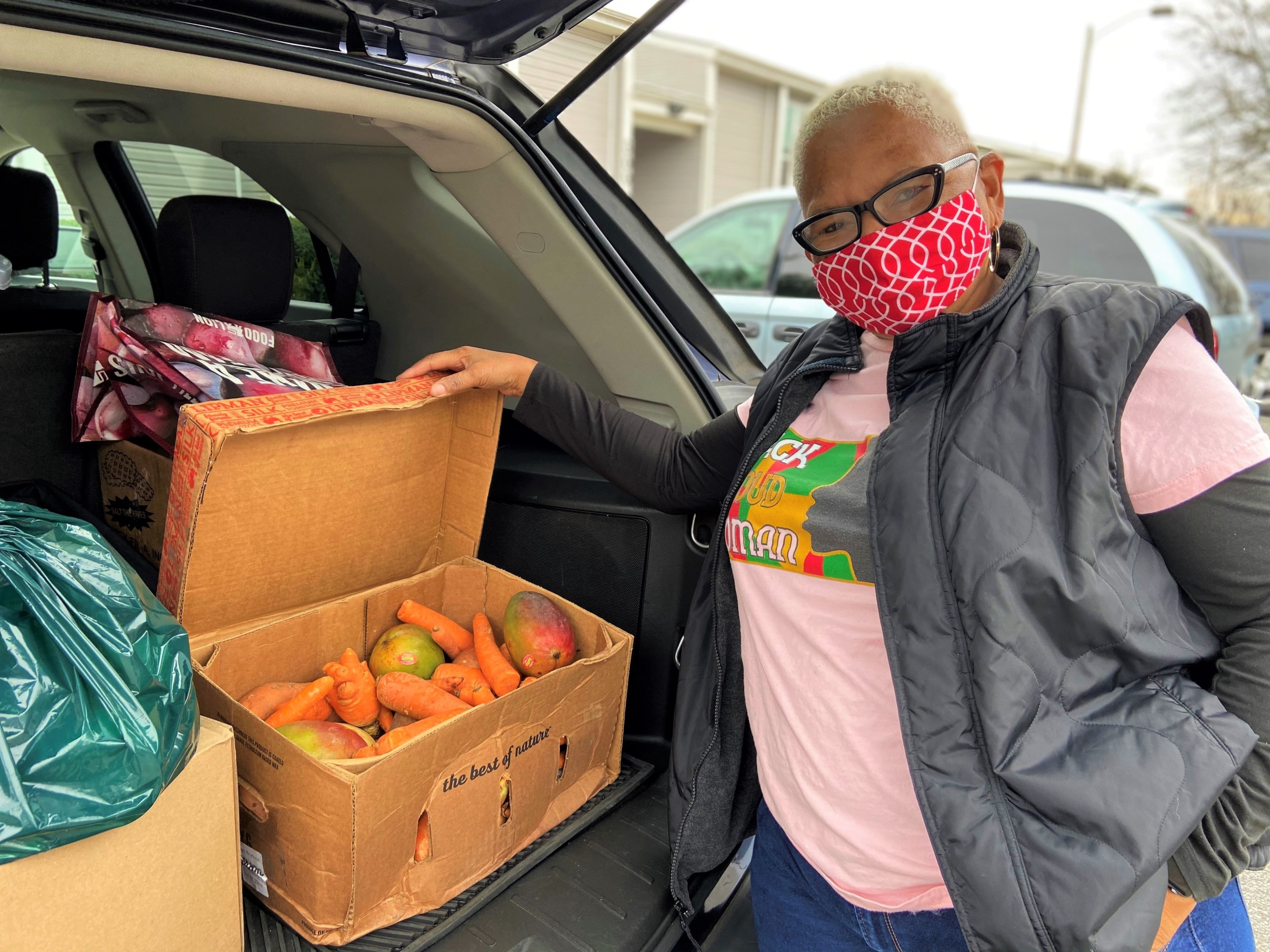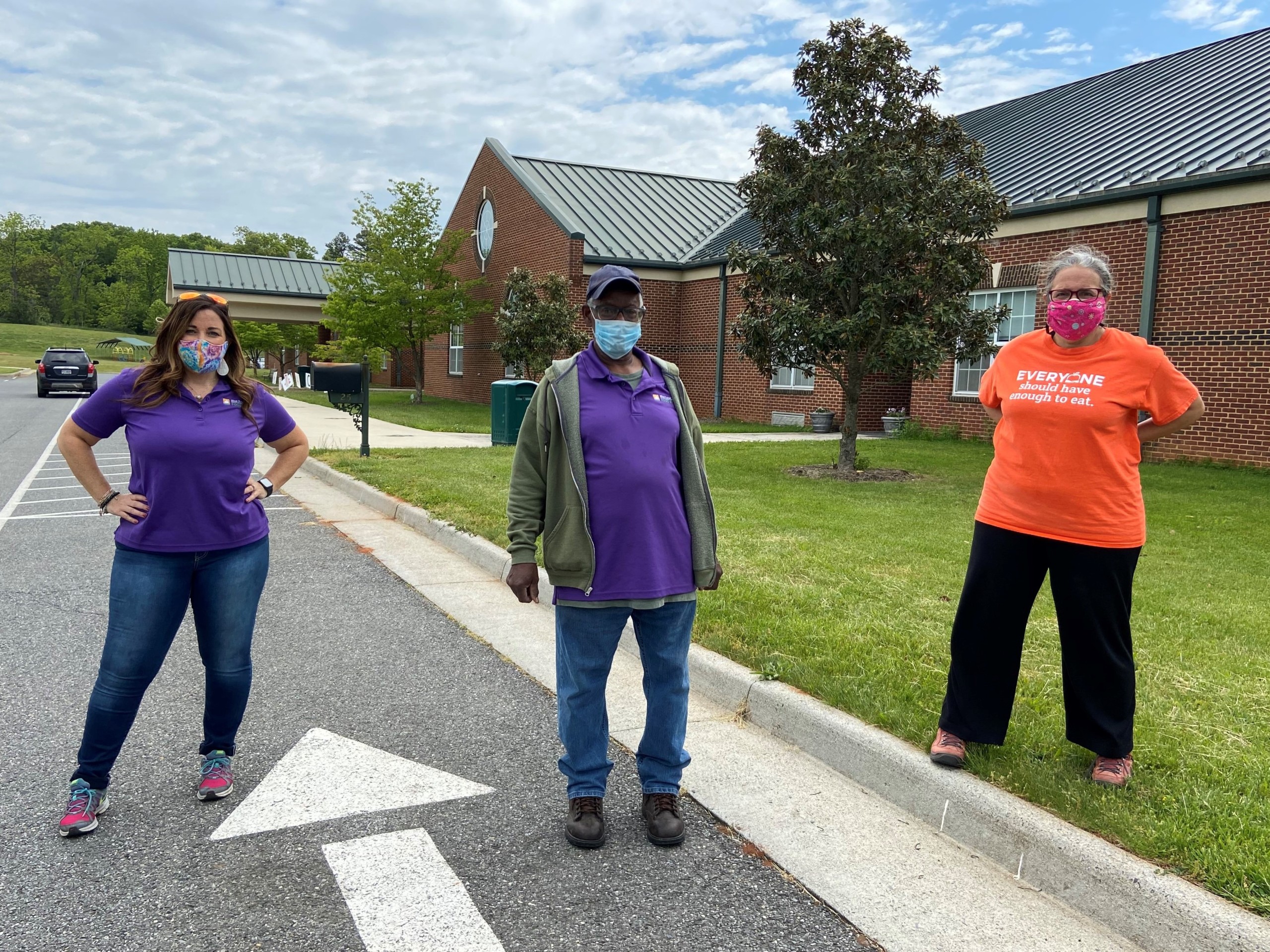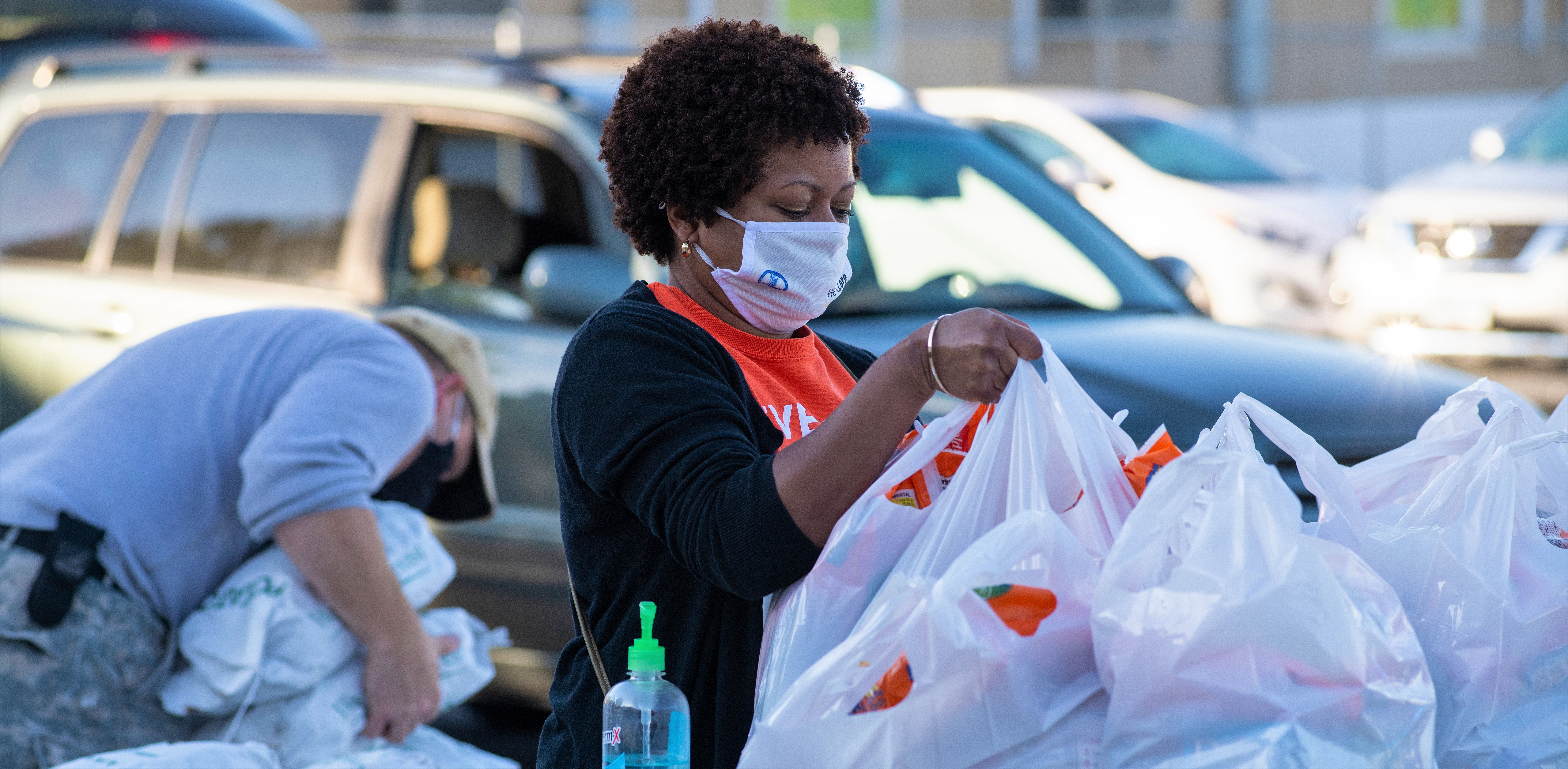This month marks a year of historic hardship for all of us—but especially for the families we serve. The COVID-19 pandemic has impacted every part of our lives. And for our clients, the changes have been significant, including loss of wages, housing instability, and lack of regular access to nutritious food.
Over the course of this year, many in the community have asked me how we’re faring at the Food Bank.
Like so many, we have been learning, stretching, and growing with every step of this strange journey. While working almost around the clock to ensure everyone has enough to eat, we’ve supported our pantry partners, adapted existing programs, and even forged new partnerships.
Our pandemic experience
When Governor Northam shut down “certain non-essential businesses” in Virginia last March, the Food Bank—and most of our partners—remained opened.
Client demand rose rapidly as unemployment increased suddenly. The total number of visits spiked 33% in the spring and has been up an average of 16% overall. Among these clients, the number of people seeking food assistance for the first time almost tripled to 16% of total visitors. We’re still seeing about 11,000 more clients each month than in pre-pandemic times.
The vast majority of our partner pantries stayed open and did heavy lifting. We remain in awe of our partners’ resilience and fortitude. To help them carry on, we’ve provided and continue to provide the following:
- pre-packed boxes (produce and shelf-stable items) at no cost
- PPE (face coverings and hand sanitizer for volunteers and clients)
- waived cost sharing on purchased food through at least June 2021
- capacity-building grants; in 2020 we awarded about $242,000 and expect to award five times this amount in 2021
We also added 23 new partners to help with unique situations posed by COVID-19. Together, we’ve distributed more than 27 million pounds of food to Blue Ridge–area neighbors since the pandemic began. That’s three million pounds more than during the same period the previous year and roughly the equivalent of 23 million meals.

Food sourcing became much more challenging and expensive—essentially overnight. Remember when the grocery–store shelves were empty? The whole food supply chain was disrupted. As a result, retail donations dropped 17% between March and December. So, the Food Bank purchased more food: 178% more during the pandemic than in the period prior. And thankfully, the USDA has provided 25% more food, a true life safer.
The Food Bank spent a lot more money on food and related costs. Over this year, we’ve spent nearly $5 million on food purchases.
Despite these challenges, what matters is that everyone came together to help more neighbors than ever. I’m so proud of what we’ve accomplished over 12 exhausting, stressful months.
What we learned
It’s easy to think about the pandemic as a 12-month disaster, but it’s really been a tipping point. There’s even more urgency for the Food Bank to act strategically to better serve our clients in the long run—to shorten the line, not just feed the line. Here’s what we learned:
- Our distribution network is our greatest asset, but it’s highly vulnerable. Charitable food assistance as we know it must evolve. I’m confident in the ability of the Food Bank to keep the food flowing but less confident that our partners can grow indefinitely. The backbone of our network are church-based pantries, but they face declining congregational membership and an aging of volunteer workforce.
- Increased need could stay with us for some time to come. Food insecurity and poverty are big, long-term problems caused by changes in the labor market. While the overall unemployment rate is 6.2%, economists suggest that the real unemployment rate is closer to 10%, and women and people of color are disproportionately affected. Especially notable for our work is that the unemployment rate among low-wage earners is at 20%. It’s not clear how many jobs will come back post-pandemic, and there may not be many positions left for people without additional skills.
- We can’t easily solve the problem of food insecurity without well-paying jobs and government support. With this week’s historic COVID-relief legislation, the government’s safety net is vastly expanding and will lift many people out of poverty. Still, we will continue needing advocate support. Together, we can encourage legislators to make lasting change for individuals enduring poverty.
With these realities in mind, we’re centering our new strategic operating plan around four priorities:
1. Strengthening and developing our food-assistance network
2. Increasing food access for underserved populations
3. Supporting improved nutrition and health
4. Focusing advocacy on federal support and statewide initiatives
How you can help
The incredible outpouring of community support (including funds donated, time volunteered, and attention given) has enabled us to respond to every challenge. As we expect elevated need to persist, here are some ways you can lend a hand:
- Donate what you can to the Food Bank and local food pantries.
- Volunteer at the Food Bank, at a local pantry, or with other hunger-relief groups.
- Raise your voice! Subscribe to our Advocacy Alerts e-newsletter and review our “Public Policy Statement.”
Thank you for standing with us
As one of our grateful clients recently shared, it’s not just the food that matters; it’s knowing that people care. Hope sustains the spirit. Thank you for feeding hope during the pandemic—and for the past 40 years.

We’re stronger together!
For more details about our pandemic response and future plans, please view a recording of the forum I hosted on March 11.

